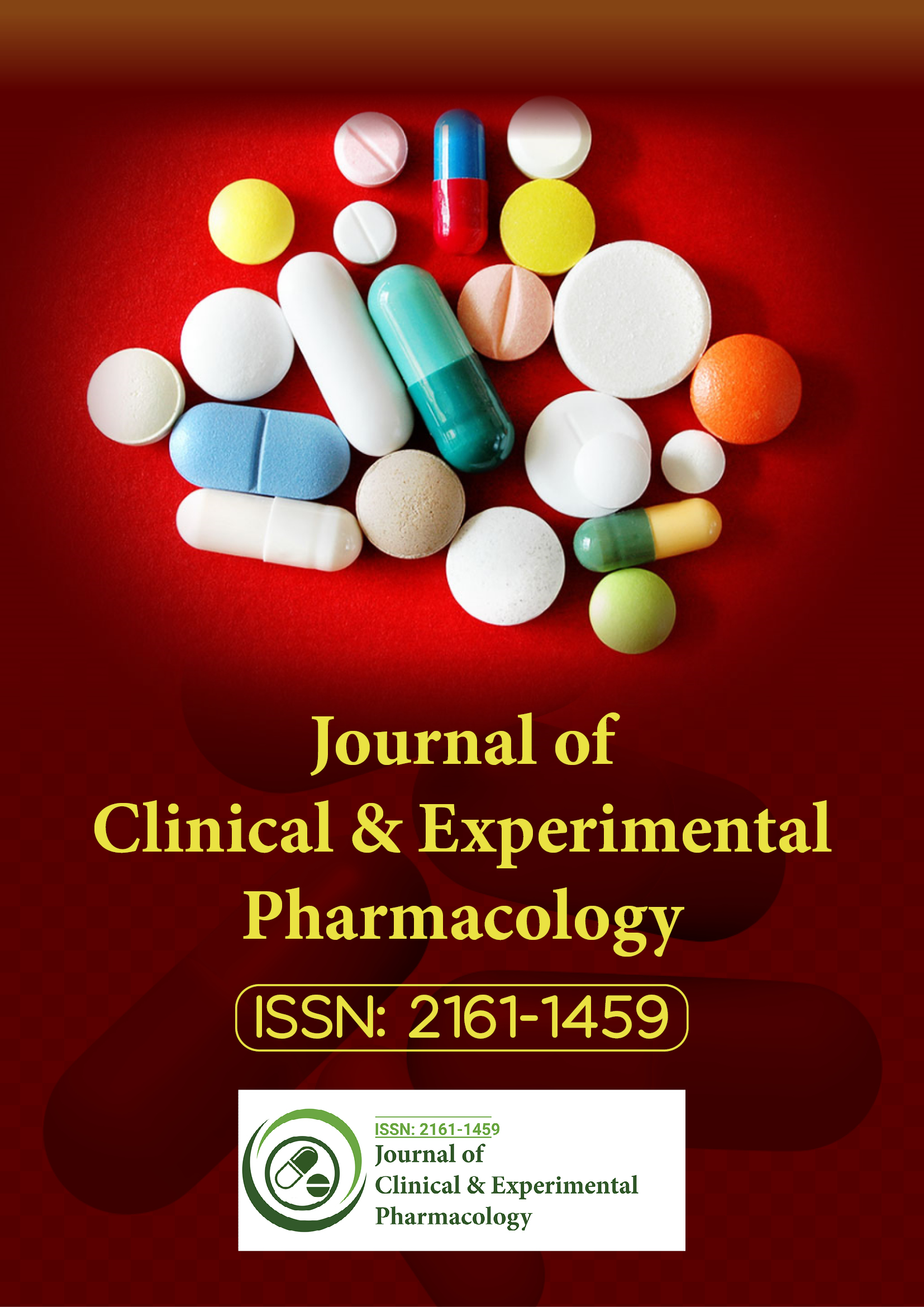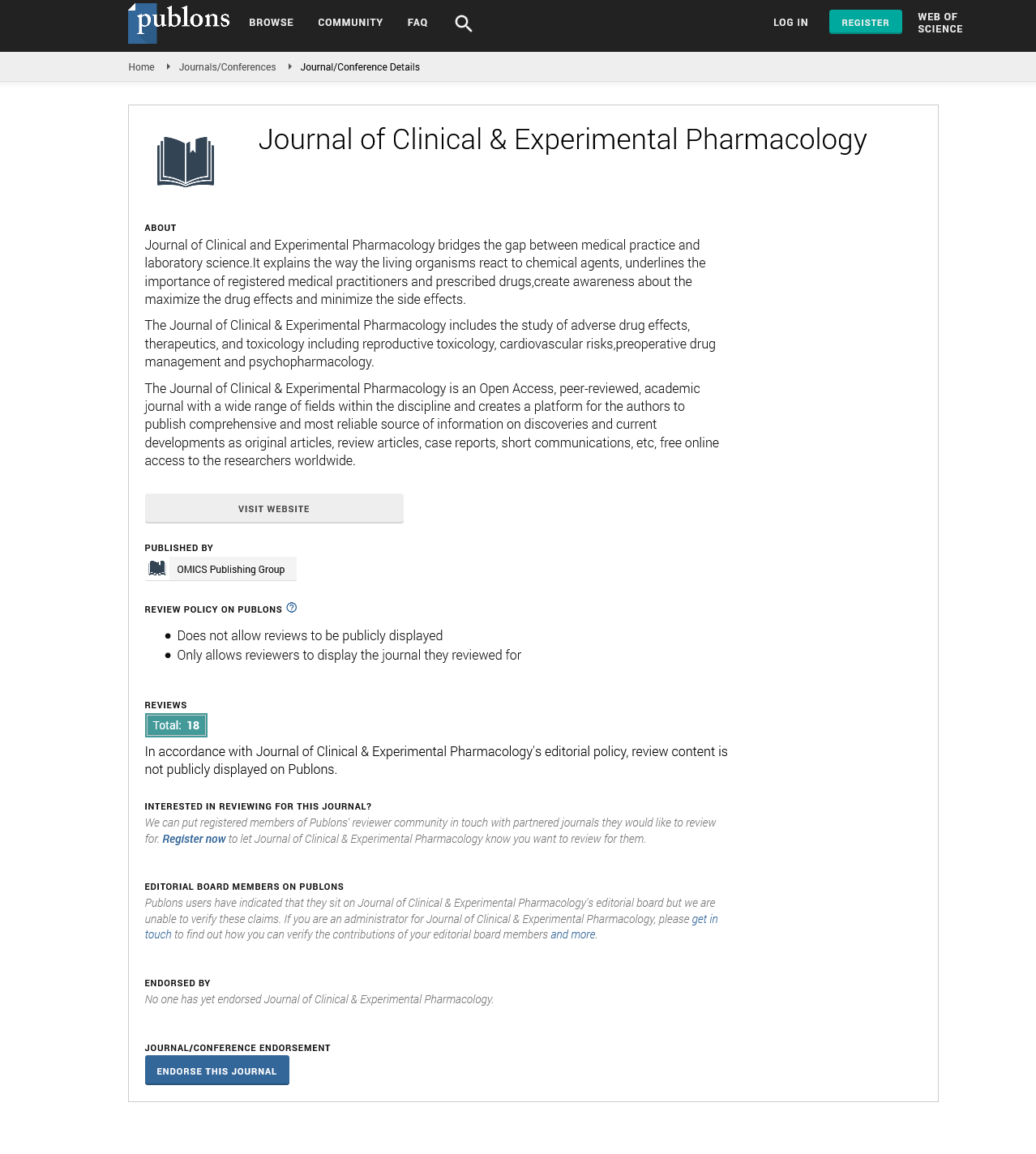Indexed In
- Open J Gate
- Genamics JournalSeek
- China National Knowledge Infrastructure (CNKI)
- Ulrich's Periodicals Directory
- RefSeek
- Hamdard University
- EBSCO A-Z
- OCLC- WorldCat
- Publons
- Google Scholar
Useful Links
Share This Page
Journal Flyer

Open Access Journals
- Agri and Aquaculture
- Biochemistry
- Bioinformatics & Systems Biology
- Business & Management
- Chemistry
- Clinical Sciences
- Engineering
- Food & Nutrition
- General Science
- Genetics & Molecular Biology
- Immunology & Microbiology
- Medical Sciences
- Neuroscience & Psychology
- Nursing & Health Care
- Pharmaceutical Sciences
Mechanisms of cytotoxic effects of Cymbopogon citratus essential oils
2nd International Conference and Exhibition on Pharmacology and Ethnopharmacology
May 02-04, 2016 Chicago, USA
Mamello Patience Sekhoacha, P De Pina CatarinoPires and M Matsabisa
University of the Free State, South Africa
Instituto Superior Politécnico de Benguela, Angola
Centro de Investigação e Tecnologias da Saúde, Portugal
Posters & Accepted Abstracts: Clin Exp Pharmacol
Abstract:
The Instituto Superior Politécnico de Benguela (ISPB) developed a project in Angola in the field of ethnopharmacology, which allows identification of several plants with pharmacological activity. From these plants, extensive studies were performed on Cymbompongus citratus L. leading to the identification and validation of antifungal, anti-laschemanial, antiplasmodial and potent antibacterial, activity against Methicillin-resistant Staphylococcus aureus strains, bringing a new hope for the treatment of multiresistant bacterial infections in humans. With this range of pharmacological activity, it is crucial to evaluate the toxicity of C. citratus on mammalian cells to determine its selectivity for pathogens. The research evaluated the effect of essential oil of C. citratus on human cells using different assays to elucidate its mode of action. The essential oil samples of C. citratus were obtained through hydro-distillation. In the assays, the samples were tested at six concentrations ranging from 1mg/ml to 0.031mg/ml and at a lower concentration range of 100μg/ml-0.001μg/ml. The cytostatic and cytotoxic effects were evaluated against Verocell line using the MTT and Sulforhodamine B assays, while the cell membrane integrity was evaluated using the LDH assay. Standard drugs were used in each assay as positive controls. C. citratus exhibited 10% LDH release at concentrations of 1μg/ml and below whilethe activity was comparable to positive control at concentration ranges of 250-1000μg/ml/. When evaluated using MTT and SRB assays, C. citratus exhibited varying degrees of cytostatic and cytotoxic effects which led to the determination of TGI, GI50 LDL0, LD100, LC50, and IC50 values against Vero cells.
Biography :
M Sekhoacha completed a PhD in Pharmacology in 2008. She has over 12 years’ experience in drug discovery from medicinal plants for treatment of infectious diseases and cancer. She has been awarded research grants, and has international collaborations.
Email: mamellosekhoacha@gmail.com

